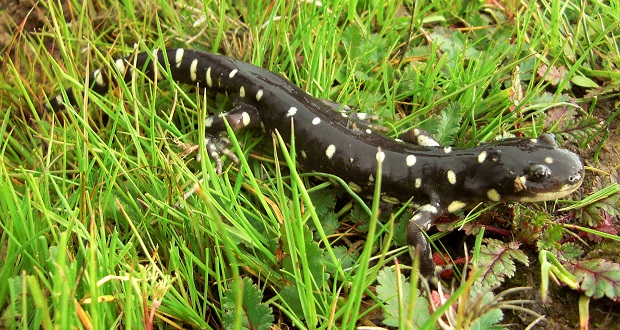MADERA COUNTY — Anyone worried about construction delays set to begin this week along the CA-41 corridor near 22 Mile House can relax a little bit, due to a change in the blasting schedule that will accommodate the relocation of a protected amphibian.
Department of Transportation (Caltrans) Resident Engineer Haidar Haddadin says blasting is now set to start anywhere from two to three weeks after the relocation process begins on Wednesday, Mar. 2.
The explosive stage of construction and its traffic delays will not start now until mid-to-late March. Haddadin says the change in plan is due to environmental issues surrounding the creature whose scientific name is Ambystoma californiense, commonly referred to as California Tiger Salamander or CTS.
“The California tiger salamander (CTS) can be found in specific habitats throughout the state of California,” explains Javier Almaguer, Central Region Biology Branch Chief of Caltrans Environmental Division. “It is state and federally protected.”
The salamander needs fishless, ephemeral wetlands or vernal pools to reproduce, says the biologist, and spends most of its life underground using active ground squirrel and gopher burrows.
“They can be found in the Oak savannah plant communities of California’s Central Valley, in the Sierra Nevada and Coast Ranges, and San Francisco Bay.”
It’s possible the salamander can also be found along the area designated to become our passing lanes, hence, the delay on blasting. Within the project area there are ephemeral pools, suitable breeding habitat for the creature.
“While the majority of these pools are unlikely to hold water for a minimum of 10 weeks, allowing enough time for CTS larvae to fully metamorphose, during a high rainy season a few of the pools could offer breeding opportunities.”
Not only would vernal pools be a good spot for breeding, the salamanders can also go through their dormant period there, later on.
“Non-native grassland habitat, currently used for livestock grazing, also exists within the project area. This non-native grassland habitat supports a relatively sparse California ground squirrel population and would be considered suitable aestivation habitat,” Almaguer says.
Aestivation is a state of animal dormancy similar to hibernation, and is what enables the salamander to survive the hot and dry conditions of the summer months. The animal Wikipedia refers to as a “relatively large, secretive amphibian” can grow to seven or eight inches, and live up to 15 years.
To keep the salamander free from harm, Caltrans will provide the maximum protection for any population found within the project area. They plan first to install specially designed exclusionary fencing meant to prevent the salamanders from entering the project area, then make note of where their homes are.
“Following installation of the fence, a wildlife biologist will map all of the burrows within the project area of appropriate size,” Almaguer continues. “It is estimated that the Madera 41 passing lanes project contains as many as 1,710 burrows. Once the burrows are mapped, a team of biologist will move methodically through the project area surveying every single burrow,” looking for salamanders.
If they do find one, the animal will be immediately placed in a hard plastic lined cooler or 5 gallon bucket with a lid, with a wet sponge in the bottom. The salamander will only be handled for a quick assessment of health, Almaguer notes.
“A biologist will then relocate the animal to a predetermined relocation site near the project site. The relocation burrow will be monitored by either a Biological Monitor or Designated Biologist for 30 minutes and then spot‐checked for the remainder of the day to determine if the relocated individual attempts to exit the burrow system and to ensure that it’s not imperiled by predators or other dangers.”
The process of finding and relocating the protected salamanders is currently expected to take two or three weeks. In the meantime, as work continues on the passing lane project, drivers are reminded to slow for the cone zone and watch out for Caltrans, and salamanders.




